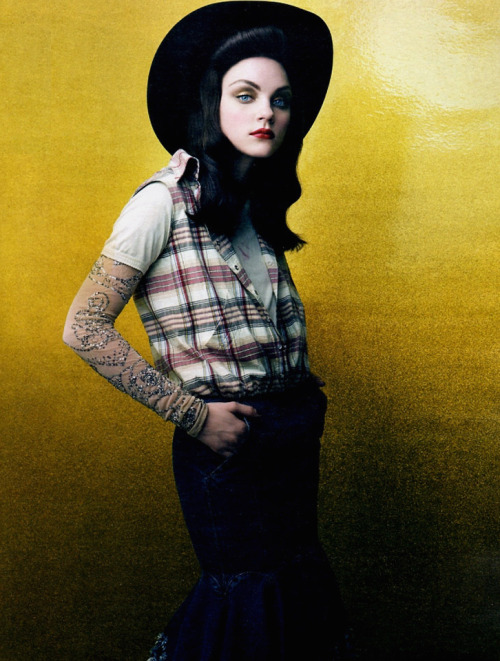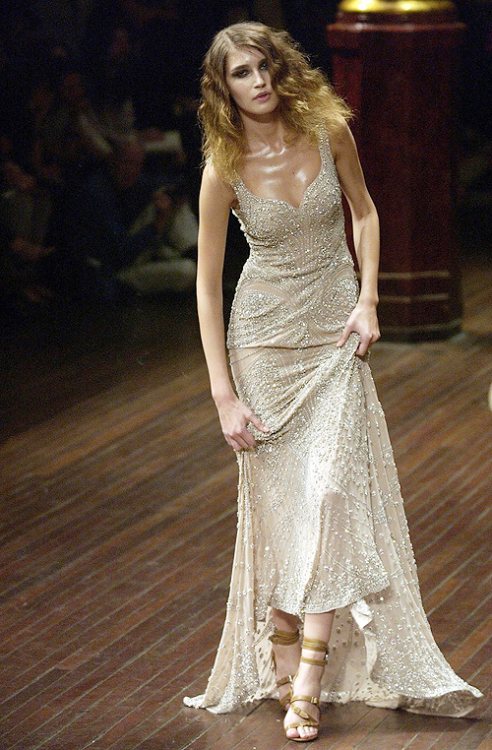McQueen once again demonstrated his abilities as
a showman in the S/S 2004 presentation ‘Deliverance’ (which can be seen here), eschewing a traditional
fashion show and choosing to show his clothing on supermodels and professional
dancers. The show was inspired by the 1969 film ‘They Shoot Horses Don’t They’,
a film depicting a gruelling ballroom dance marathon set against the backdrop
of America in the midst of the Great Depression. Both the film and ‘Deliverance’
act as a commentary on high society – described as a battle between the
beautiful and the damned, it shows dedication to the façade of beauty in times
of financial ruin.
The show was risky in the sense that the focus
was rarely on just one outfit, which made it difficult for the fashion media to
document the collection. Although many used this as another example of McQueen
as a showman as opposed to a designer, it did show conviction in his own
concepts and also proved that the sole aim of his work wasn’t just to sell
garments. By this time, McQueen had other ranges including diffusion and
jewellery lines, so the fact that the media couldn’t clearly photograph every
look in the collection (the most valuable method of promotion) made little
difference – his mainline was no longer his only source of profit.
Several of his supermodel friends also made an
appearance, resulting in some incredible casting. Glamorous Manchester-born
redhead Karen Elson technically ‘opened’ the show looking every inch the
bombshell in a stunning floor-length gown embellished with thousands of tiny gold
sequins – sequins which sporadically scattered across the dancefloor throughout
the marathon. Sweat began to permeate the immaculately coiffed hair of the
models and low-cut necklines partially exposed breasts which were gleaming with
perspiration. The clothing was traditionally beautiful – there was sparkle,
there were evening gowns, there was silk and there were feathers aplenty. The
cheekily low-cut backs of the dresses were a knowing nod towards the McQueen ‘bumster’
and the male dancers wore lycra tops emblazoned with the sequinned skull –
perhaps the designer’s most distinctive motif. The detail was astounding too,
to the extent that some of the clothing more closely resembled couture than
ready-to-wear – proof that McQueen could apply his meticulous craftsmanship to
a more glamorous aesthetic.
As the marathon wore on and energy levels began
to slump, the conceptual side of the designer reared its head as expired models
were dragged around the dance floor in their tattered clothing. Hemlines were
ruffled, hairdos were ruined and the crowd watched in awe as they saw a much
less glamorous version of the sequinned gown that had opened the show. The show
acted as a commentary on the effort required to maintain a chic façade and the
struggle to live an affluent lifestyle. It represented a designer using his
budget to create meticulously-detailed clothing and to present it in an
innovative way, and it also represented that McQueen still possessed the desire
to fascinate the fashion crowd, albeit using less shocking methods than he had
in the past.



No comments:
Post a Comment